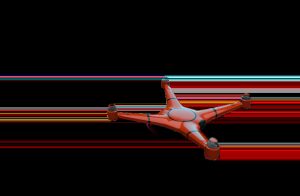Office Design Psychology: Spaces That Inspire Innovation
The workplace environment plays a crucial role in employee satisfaction, productivity, and creativity. As more companies prioritize innovation and creative thinking, the design of office spaces has become an important factor in achieving these goals. Office design psychology is a growing trend that focuses on creating spaces that inspire and support creativity and innovation. By understanding the psychology behind office design, companies can create workspaces that foster a culture of innovation and unlock the full potential of their employees.
Understanding Office Design Psychology
Office design psychology is the study of how the physical environment affects the psychological well-being and performance of individuals in the workplace. It takes into consideration various factors such as lighting, color, layout, furniture, and overall aesthetics to create an environment that promotes productivity, creativity, and collaboration.
One of the main principles of office design psychology is the concept of “biophilia,” which suggests that humans have an innate connection to nature and natural elements. This connection can be utilized in office design by incorporating natural elements such as plants, natural light, and organic materials into the workspace. By doing so, employees feel more connected to the environment, which can have a positive impact on their overall mood and well-being.
The Role of Color
Color has a powerful influence on our emotions and behavior. In office design psychology, color is used strategically to create the desired mood and atmosphere. Blue, for example, is known to promote calmness and productivity, while yellow is associated with creativity and positive energy. Companies can use different colors to create specific areas within the office, such as using blue in quiet spaces for focused work and yellow in collaborative areas for brainstorming sessions.
The Power of Lighting
Lighting is another crucial aspect of office design that can greatly impact employee performance. Natural light has been proven to boost mood, energy, and overall well-being. Offices that have ample natural light tend to have happier and more productive employees. However, for spaces that do not have access to natural light, artificial lighting should be used carefully. Bright, cool-toned light can improve focus and alertness, while warm, dim light can create a more relaxed and comfortable atmosphere.
Designing for Collaboration
In today’s fast-paced work environment, collaboration is vital for innovation and problem-solving. An effective office design can facilitate collaboration by creating spaces that promote communication and teamwork. Open floor plans, communal areas, and designated brainstorming rooms are some of the design elements that encourage collaboration. These spaces should be designed to be comfortable and inviting, with the right balance of privacy and openness.
The Importance of Comfort
Comfort should not be underestimated when it comes to office design. Employees spend a significant amount of time at their desks, and a poorly designed workspace can lead to physical discomfort and distractions. To promote productivity and focus, companies should invest in high-quality ergonomic furniture and consider the individual needs of their employees, such as adjustable desks and comfortable seating.
The Role of Technology
Technology is an essential tool for any modern workplace, and its integration into office design psychology can have a significant impact on employee performance. Companies should provide employees with the necessary technology to perform their duties efficiently, as well as incorporating technology into the physical space itself. For example, interactive screens and digital whiteboards can enhance collaboration and creativity.
Incorporating Office Design Psychology into Your Workspace
Implementing office design psychology in the workplace requires careful planning and consideration. It is essential to involve employees in the design process and gather feedback to understand their needs and preferences. Employing the principles of office design psychology can result in a workspace that promotes creativity, boosts productivity, and inspires innovation.
In conclusion, office design psychology is a vital aspect of creating a workplace that fosters innovation and creative thinking. By incorporating elements such as biophilia, color, lighting, collaboration, comfort, and technology, companies can design workspaces that inspire and motivate their teams. As businesses continue to prioritize innovation, office design psychology will play an increasingly important role in creating successful and thriving work environments.











